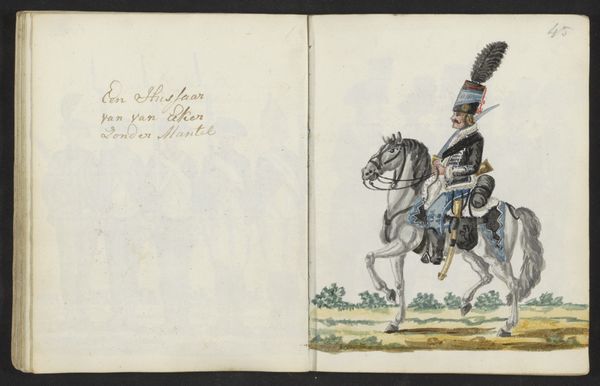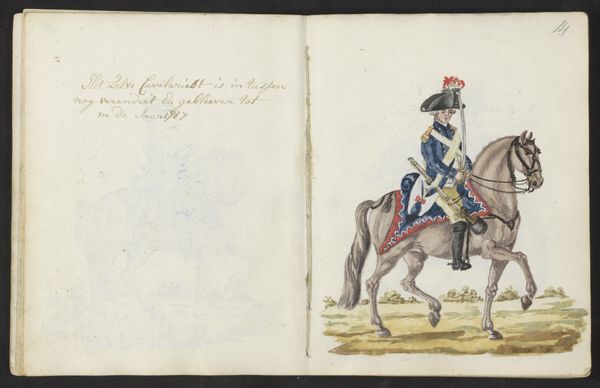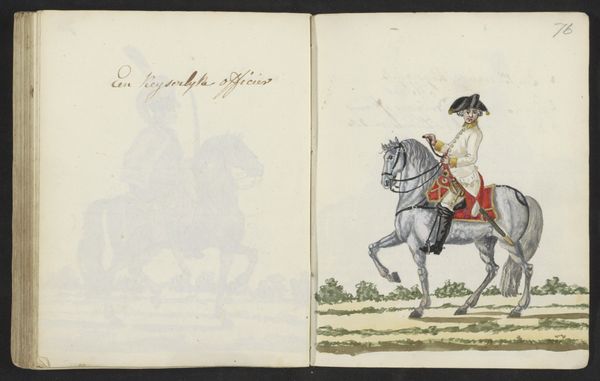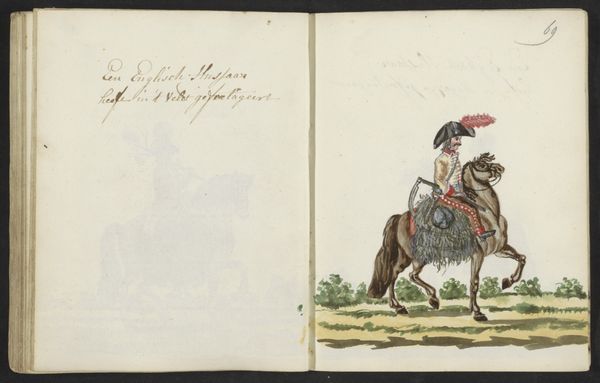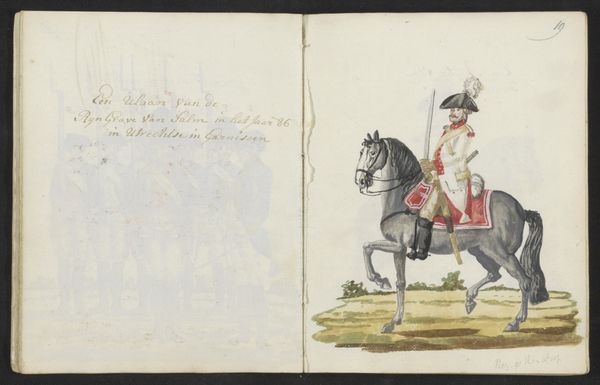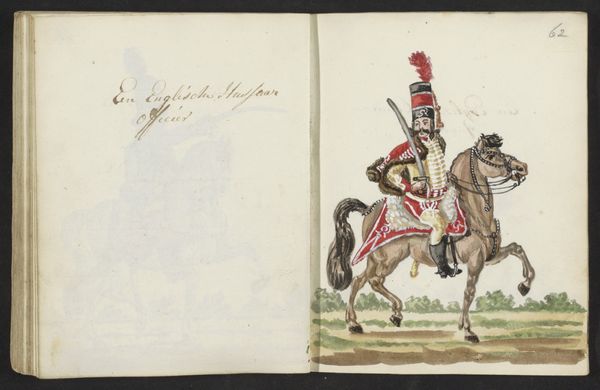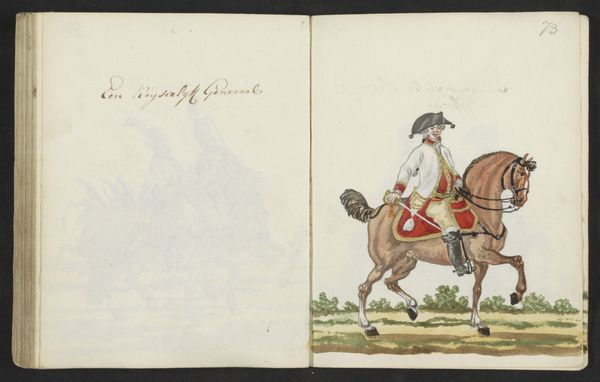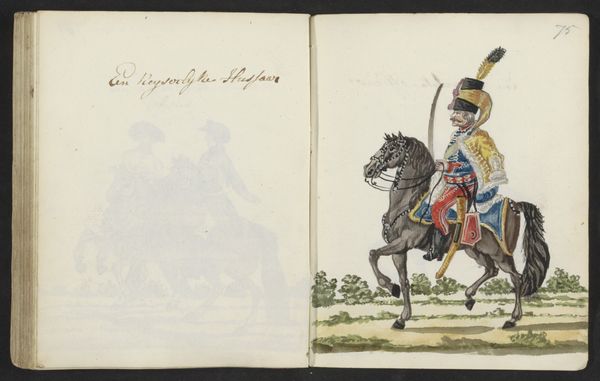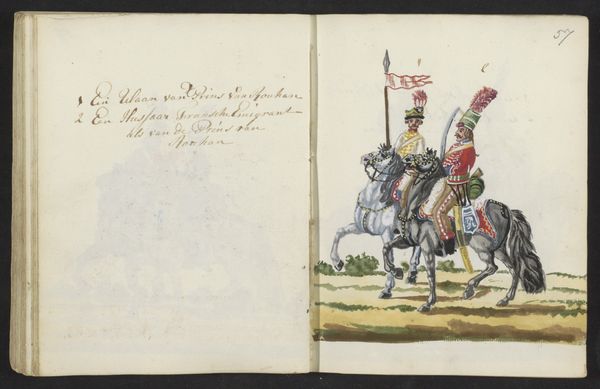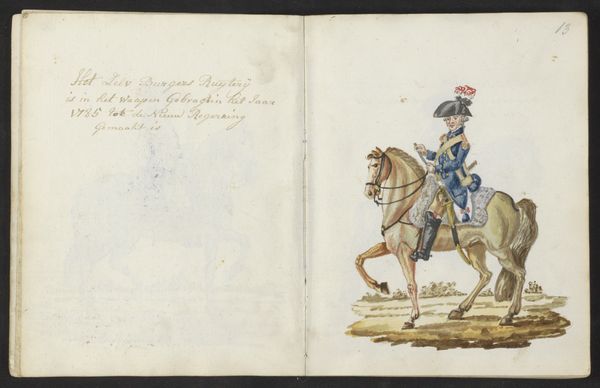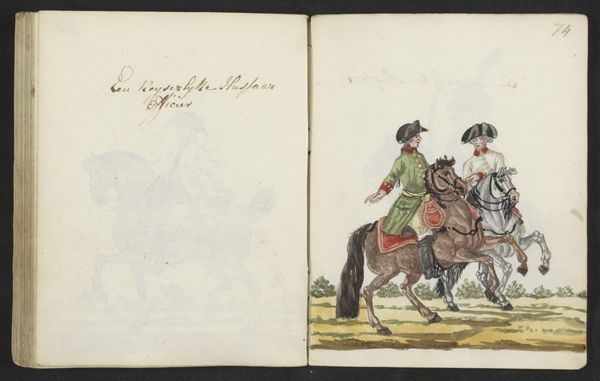
drawing, coloured-pencil, watercolor
#
portrait
#
drawing
#
coloured-pencil
#
watercolor
#
coloured pencil
#
romanticism
#
sketchbook drawing
#
watercolour illustration
#
genre-painting
#
realism
Dimensions: height 197 mm, width 310 mm
Copyright: Rijks Museum: Open Domain
Curator: This watercolor and colored pencil drawing by S.G. Casten, created around 1795, depicts a rather elegant scene. Editor: Elegant is one word. My initial impression is, how muted everything seems! The colors are so delicate; almost faded. There’s a kind of reserved formality in the composition. Curator: Precisely! Notice the delicate rendering of the uniform, how the textures are evoked with the layering of color. And the posture of both horse and rider, contained and refined within the composition. It's all quite controlled. The drawing meticulously represents “Uniform van de cavalerie van het Amsterdamse exercitiegenootschap in 1785." Editor: But what does it tell us about the process itself? Was this preparatory work or independent of it? The visible strokes indicate a very manual construction; you can almost feel the artist at work, mixing pigment and carefully applying it to the paper. How long would something like this have taken to produce? What were the working conditions, the studio setup? I think about the artisanal labor behind even this 'simple' image. Curator: The precision, I would argue, elevates this beyond simple labor. The romantic realism captured here provides a portrait and commentary. The artist makes use of both colour and form to render a scene that transcends its subject matter, gesturing towards something sublime. Note also the implied narrative – where is the cavalryman riding to? And note that tension. Editor: But we are so quick to frame even mundane labour as ‘transcendence.' How accessible was this particular troop, this experience being captured, to the people of Amsterdam? Was this drawing commissioned? If so, it becomes tied to the systems that commissioned it; what was its material lifespan and its social afterlife, to whom and what was it marketed. To dismiss the physical labor required in constructing the object and understanding all its possible points of market sale I find, shall we say, somewhat telling. Curator: But can we not appreciate the inherent qualities of line, color, composition? The delicate balance achieved by the artist elevates this from mere depiction. Editor: The tension between craft, labour and formal rendering remains a worthwhile point. It reveals the economic underpinnings which so greatly determined the accessibility of art at the time. Curator: Well, however, you look at it, the drawing is worth further consideration and offers a unique perspective into Amsterdam's social fabric and material culture during that transformative era.
Comments
No comments
Be the first to comment and join the conversation on the ultimate creative platform.
